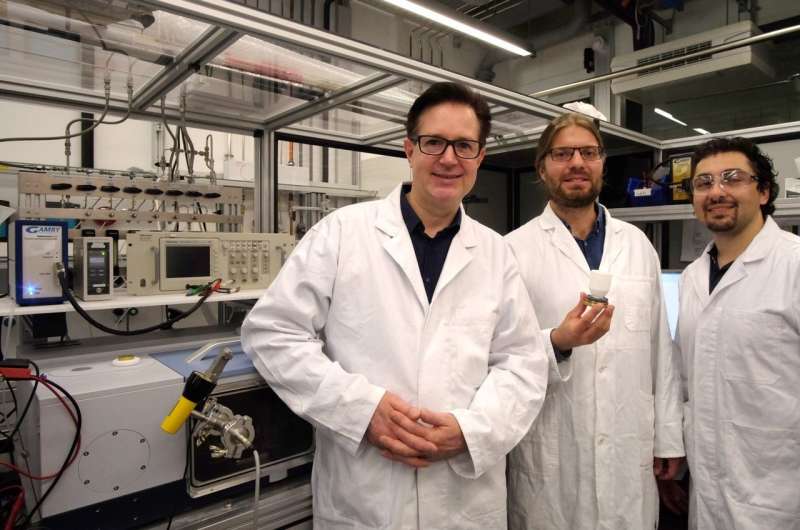Taking a closer look at 'electrifying' chemistry

The future of chemistry is 'electrifying.' With the increasing availability of electrical energy from renewable sources, it will be possible in the future to drive many chemical processes using an electric current. This will facilitate the use of sustainable methods to manufacture products or fuels, replacing current processes based on fossil fuels. However, exactly how these electrocatalysts work is not yet fully understood. This could now all change with a new method developed by researchers from Friedrich-Alexander-Universität Erlangen-Nürnberg (FAU) and the Helmholtz Institute Erlangen-Nürnberg for Renewable Energy (HI ERN).
Reactions driven by electricity almost always use so-called electrocatalysts, which are usually highly complex materials made up of a large number of chemical components. The role of electrocatalysts is to ensure the reaction takes place while keeping any losses to a minimum, thus wasting as little as possible of the renewable energy, which is complex to produce. This method can be used to produce important energy carriers such as hydrogen directly from water and to convert climate gases such as carbon dioxide into valuable basic chemicals. In most cases, the precise chemical processes in electrocatalysts are not very well understood. Improving the understanding of this electrically driven chemistry is essential, on the one hand to manufacture catalysts for new processes in a targeted manner and, on the other, to improve the often extremely limited life of the catalysts themselves.
As reported in the journal Nature Materials, researchers from FAU, HI-ERN and their international partner groups have now developed a new method that will enable electrocatalytic reactions to be studied in much more detail in future. In conjunction with Prof. Dr. Karl Mayrhofer at HI-ERN, the working group led by Prof. Dr. Jörg Libuda, Professor of Physical Chemistry at FAU, demonstrated that it is possible to construct a complex electrocatalyst with atomic precision and to use it to study the precise mechanism of electrocatalytic reactions. The catalysts are assembled in so-called ultra-high vacuum conditions, in the complete absence of all contaminants that often influence results. This breakthrough will enable scientists to study a large number of other catalysts using the same strategy, thus improving our understanding of 'electrified' chemistry in the future.
More information: Firas Faisal et al, Electrifying model catalysts for understanding electrocatalytic reactions in liquid electrolytes, Nature Materials (2018). DOI: 10.1038/s41563-018-0088-3
Journal information: Nature Materials
Provided by University of Erlangen-Nuremberg




















